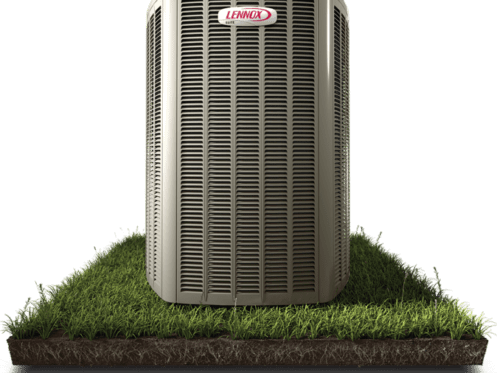Most people don’t know much about residential air conditioning systems beyond how to turn one on or off. That makes sense, given that they’re complex machines that require specific expertise to install, maintain, and repair. One thing people do tend to know, though, is that having the right size air conditioner plays a key role in their comfort. So, the experts here at Charleston Heating and Air decided to put together this guide to choosing the right size air conditioner for your home.
Understanding Air Conditioner Cooling Capacity
The first thing you’ll need to understand before choosing an AC is the measurements used to express their cooling capacity. You’ll find that the basic measurement on ACs is something called BTUs. A BTU, or British Thermal Unit, is a measurement that tells you how many units of heat a given AC can remove from a room within one hour. If you have ever shopped for a window AC unit, you know that the BTUs are listed on the box.
More specifically, a single BTU represents how much heat is needed to increase the temperature of one pound of water by one degree Fahrenheit at sea level. Confusing, isn’t it? Fortunately, all you need to know about BTU ratings is how they relate to finding the right-sized air conditioner. Thankfully, that’s the easy part.
Turning BTUs Into Usable Sizing Information
In general, you’ll need about 20 BTUs of power to cool each square foot of a room. To determine the total amount of BTUs needed, simply multiply the width of the room by its length. Then, multiply the result by 20. The answer you get tells you how powerful an AC you need.
You should know, of course, that the formula above assumes the room you’re measuring has standard-height ceilings, standard window sizes, and average sun exposure. If your room differs from those assumptions, you can do the following:
- Reduce capacity by 10% for a shaded room
- Increase capacity by 10% for a sunny room
- Increase capacity by at least 1,000 BTU for each foot of ceiling height above 8 feet
Choosing the Right Size Central AC
Central AC units don’t normally have BTU capacities listed on them. Instead, you’ll see the capacity of central AC systems expressed as tonnage. Although this seems like a totally different way to measure cooling capacity, it’s actually little more than a form of shorthand.
To wit, one ton of central AC capacity is the same as 12,000 BTUs of cooling capacity. So, if you need a central AC system with 60,000 BTUs of cooling capacity, you’d be looking for a 5-ton unit. For a rough estimate of what size central AC system your home needs, you’d simply calculate its total interior square footage and multiply it by 20. Dividing the result of that figure by 12,000 tells you the tonnage needed. Of course, there’s far more to sizing a central air conditioning system than simple math. There are a variety of environmental factors you’d need to consider as well.
Environmental Factors That Affect AC Sizing
You already now know that factors like ceiling height and sun exposure play a role in proper air conditioner sizing. When you’re dealing with a single room, those factors are usually obvious and easy to adjust for. However, when you are dealing with an entire home, things get a bit more complicated.
To choose the right central AC size, you will need to factor in a whole host of environmental factors. Some of them include:
- Quality of the home’s existing ductwork
- Quality and performance of the home’s insulation
- Type and age of the home’s windows
- Materials used in the home’s exterior and interior walls
- Average cooling season temperatures near your home
- Number and type of heat-generating appliances used
- Existence of amenities like fireplaces or sunrooms
As you can see, figuring out what size central AC unit your home requires isn’t as straightforward as you might think. Some consequences come with making the wrong decision. If you choose a central AC that’s too small for your home, it will run constantly in the summer without ever adequately cooling your home. On the other hand, an oversized unit will cycle on and off too often, costing you more on your power bill. This will wear out the unit prematurely.
The extra power that an oversized AC might waste isn’t insignificant. According to a study of AC use by average homes in the U.S., an AC system as little as 20% too large can use 3.7% more energy to cool a home than a correctly sized system. At 50% too large, that figure becomes 9.3%. That would translate into a large and noticeable increase in cooling costs over an average cooling system. So, choosing a central AC that’s just the right size for your home is quite important to your family’s financial bottom line.
The good news is that a professional HVAC installer like Charleston Heating and Air can save you the trouble. Our technicians can evaluate your home to create an HVAC sizing estimate known as a Manual J Residential Calculation.
What Is a Manual J Residential Calculation?
A Manual J Residential Calculation is a formal way to evaluate a home’s cooling needs. It’s based on guidelines developed by the Air Conditioning Contractors of America (ACCA). In short, it offers HVAC installers detailed BTU measurements they can assign to various elements of a home. It also spells out how to estimate losses from things like poor insulation or old and damaged ductwork.
Even though it might be possible for a homeowner to conduct their own Manual J Residential Calculation, doing so isn’t a good idea. The reason is simple. Although the ACCA’s guidelines are specific and clear, their application is anything but.
There’s a great deal of subjectivity that goes into how each BTU value gets applied to a given home. Getting it right takes training, practice, and most of all, years of experience. So, it’s best to leave Manual J Calculations to the experts.
Do Not Take Any Chances With AC Sizing
Using the information in this guide, someone might be able to come up with a ballpark estimation of what size of central AC is needed. However, it wouldn’t ever be a good idea to rush out and purchase a central AC based on an estimate. Unlike a window air conditioner, you can’t simply return a central AC system if you pick the wrong one.
Instead, you’re always better off dealing with a professional HVAC installer like Charleston Heating and Air. We’ve served the North Charleston, SC area for over a decade, and in that time, we’ve worked with over 15,000 satisfied customers. Plus, we offer comprehensive air conditioning and heating installation, service, and repair solutions to keep your home comfortable all year. Additionally, our team of experts does plumbing and electrical work as well. Let us show you why we are your preferred HVAC company in the North Charleston area.
So, if your home needs a new air conditioning system, contact Charleston Heating and Air today!

